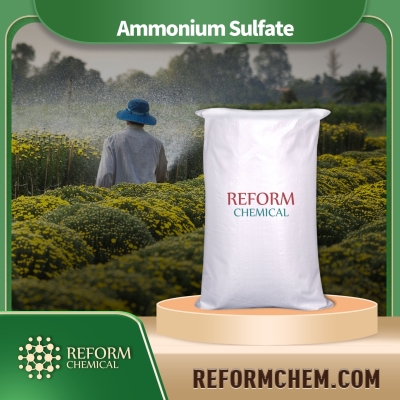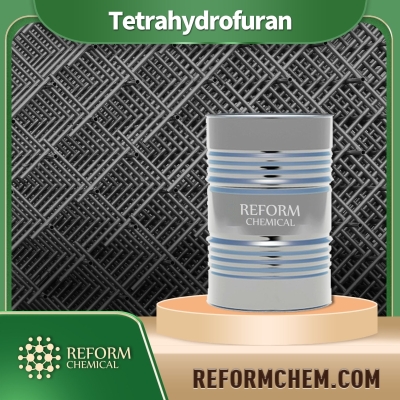-
Categories
-
Pharmaceutical Intermediates
-
Active Pharmaceutical Ingredients
-
Food Additives
- Industrial Coatings
- Agrochemicals
- Dyes and Pigments
- Surfactant
- Flavors and Fragrances
- Chemical Reagents
- Catalyst and Auxiliary
- Natural Products
- Inorganic Chemistry
-
Organic Chemistry
-
Biochemical Engineering
- Analytical Chemistry
-
Cosmetic Ingredient
- Water Treatment Chemical
-
Pharmaceutical Intermediates
Promotion
ECHEMI Mall
Wholesale
Weekly Price
Exhibition
News
-
Trade Service
1.
Identification of pesticide labels.
Pesticide name: including the common name, percentage content and dosage form of the active ingredients
.
Mainly check the Chinese common names of pesticides, no matter which company produces them, the Chinese common names of pesticides are the same
.
Pesticide formulations: different formulations use different methods
.
If the wettable powder is sprayed by dilution with water, the powder can only be sprayed or sprayed, but not diluted spray
.
Pesticide "Three Certificates" number: Including pesticide registration certificate number, generally expressed by LS + number, PD (or PD + number); pesticide production license number (pesticide approval certificate number), generally expressed by XK + number or HNP + number; pesticide product standard Number, generally represented by GBXX (national standard), HBXX (trade standard), and Q/XXX (enterprise standard)
.
Pesticide type: generally indicated by words and characteristic bands, in which insecticides are red, fungicides are black, herbicides are green, plant growth regulators are blue, and rodenticides are yellow
.
Remembering the types of pesticides these colors represent will help avoid misuse of pesticides
.
Content typically includes symptoms of poisoning and first aid measures, safety warnings, safety interval, storage of special requirements: Note the use of pesticides
.
2.
Initial identification of pesticide quality Check whether the main content of the label is qualified and true
.
Check the delivery time to see if the product is within the warranty period
.
The shelf life of general products is 2 years, and for individual varieties, it is 3 years
.
Check whether the "three certificates" are complete and true
.
Check the appearance of the product
.
Different pesticides have different characteristics, which can be distinguished from the shape and color
.
Qualified emulsifiable concentrate products should be uniform and translucent, with no emulsifiable concentrate on the top and no precipitation on the bottom
.
The powder or wettable powder should not be agglomerated and should be in powder form
.
Check the "Pesticide Registration Announcement" or log on to the China Pesticide Information Network for verification
.
Part.
2 Pesticide application key points to prescribe the right medicine: First, according to the pest control object, choose the corresponding pesticide, the appropriate pesticide type or formulation
.
Second, understand the performance of pesticides, use the correct control methods, and improve the effect
.
Timely medication: Strictly grasp the best prevention period according to the occurrence of diseases and insect pests, and achieve timely medication
.
Diseases should be prevented and controlled in the early stages of the disease, and the center of the disease should be controlled to prevent the spread and development of the disease
.
For insect pests, it is required to "cure the early and small"
.
Scientific use of medicines: It should be noted that insecticides with different effects should be used interchangeably.
These insecticides cannot be single for a long time to prevent pathogens or pests from developing resistance
.
In the early stage of fruit tree growth, high-efficiency and low-toxicity chemical pesticides and biological pesticides are mixed or alternately used, and in the later stage of growth, biological pesticides are mainly used
.
The use of pesticides should promote a low-volume spray method
.
Choose the correct spraying point or location: When applying pesticides, determine different parts of the fruit tree according to the occurrence characteristics of different pests and diseases in different periods, and conduct targeted spraying to achieve timely control of pests and diseases, reduce pathogens and reduce the number of pests, thereby reducing the use of pesticides
.
For example, the occurrence of downy mildew starts from the lower leaves and progresses upwards
.
The early control of downy mildew is mainly concentrated on the lower leaves, which can reduce the infection of the upper leaves
.
Reasonable mixing of medicines: through the method of mixing medicines, the purpose of one-time application of medicines to prevent and control a variety of diseases and insect pests
.
However, the mixture of pesticides should be based on the premise of maintaining the original active ingredients or having a synergistic effect, without increasing the toxicity to humans and animals, and having good physical properties
.
Master the safety interval of pesticides: The safety interval of pesticides must be strictly implemented according to the deadline.
The safety interval of pyrethroid pesticides is 5-7 days, organophosphorus pesticides are 7-14 days, and the fungicide contains chlorothalonil, zinc methionine, and multibacteria.
Spirit for more than 14 days, the remaining 7~10 days
.
Pesticide compounding agent implements the safety interval of the most residual active ingredient
.
Identification of pesticide labels.
Pesticide name: including the common name, percentage content and dosage form of the active ingredients
.
Mainly check the Chinese common names of pesticides, no matter which company produces them, the Chinese common names of pesticides are the same
.
Pesticide formulations: different formulations use different methods
.
If the wettable powder is sprayed by dilution with water, the powder can only be sprayed or sprayed, but not diluted spray
.
Pesticide "Three Certificates" number: Including pesticide registration certificate number, generally expressed by LS + number, PD (or PD + number); pesticide production license number (pesticide approval certificate number), generally expressed by XK + number or HNP + number; pesticide product standard Number, generally represented by GBXX (national standard), HBXX (trade standard), and Q/XXX (enterprise standard)
.
Pesticide type: generally indicated by words and characteristic bands, in which insecticides are red, fungicides are black, herbicides are green, plant growth regulators are blue, and rodenticides are yellow
.
Remembering the types of pesticides these colors represent will help avoid misuse of pesticides
.
Content typically includes symptoms of poisoning and first aid measures, safety warnings, safety interval, storage of special requirements: Note the use of pesticides
.
2.
Initial identification of pesticide quality Check whether the main content of the label is qualified and true
.
Check the delivery time to see if the product is within the warranty period
.
The shelf life of general products is 2 years, and for individual varieties, it is 3 years
.
Check whether the "three certificates" are complete and true
.
Check the appearance of the product
.
Different pesticides have different characteristics, which can be distinguished from the shape and color
.
Qualified emulsifiable concentrate products should be uniform and translucent, with no emulsifiable concentrate on the top and no precipitation on the bottom
.
The powder or wettable powder should not be agglomerated and should be in powder form
.
Check the "Pesticide Registration Announcement" or log on to the China Pesticide Information Network for verification
.
Part.
2 Pesticide application key points to prescribe the right medicine: First, according to the pest control object, choose the corresponding pesticide, the appropriate pesticide type or formulation
.
Second, understand the performance of pesticides, use the correct control methods, and improve the effect
.
Timely medication: Strictly grasp the best prevention period according to the occurrence of diseases and insect pests, and achieve timely medication
.
Diseases should be prevented and controlled in the early stages of the disease, and the center of the disease should be controlled to prevent the spread and development of the disease
.
For insect pests, it is required to "cure the early and small"
.
Scientific use of medicines: It should be noted that insecticides with different effects should be used interchangeably.
These insecticides cannot be single for a long time to prevent pathogens or pests from developing resistance
.
In the early stage of fruit tree growth, high-efficiency and low-toxicity chemical pesticides and biological pesticides are mixed or alternately used, and in the later stage of growth, biological pesticides are mainly used
.
The use of pesticides should promote a low-volume spray method
.
Choose the correct spraying point or location: When applying pesticides, determine different parts of the fruit tree according to the occurrence characteristics of different pests and diseases in different periods, and conduct targeted spraying to achieve timely control of pests and diseases, reduce pathogens and reduce the number of pests, thereby reducing the use of pesticides
.
For example, the occurrence of downy mildew starts from the lower leaves and progresses upwards
.
The early control of downy mildew is mainly concentrated on the lower leaves, which can reduce the infection of the upper leaves
.
Reasonable mixing of medicines: through the method of mixing medicines, the purpose of one-time application of medicines to prevent and control a variety of diseases and insect pests
.
However, the mixture of pesticides should be based on the premise of maintaining the original active ingredients or having a synergistic effect, without increasing the toxicity to humans and animals, and having good physical properties
.
Master the safety interval of pesticides: The safety interval of pesticides must be strictly implemented according to the deadline.
The safety interval of pyrethroid pesticides is 5-7 days, organophosphorus pesticides are 7-14 days, and the fungicide contains chlorothalonil, zinc methionine, and multibacteria.
Spirit for more than 14 days, the remaining 7~10 days
.
Pesticide compounding agent implements the safety interval of the most residual active ingredient
.






